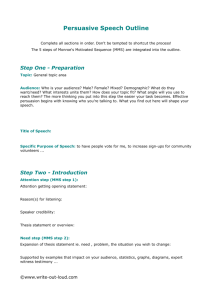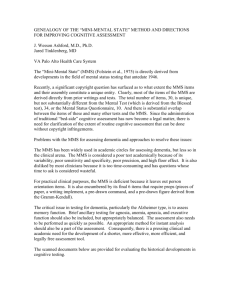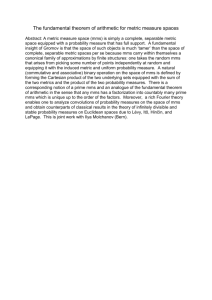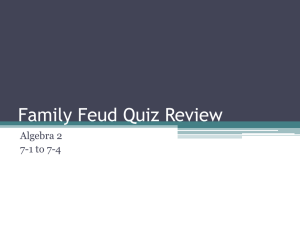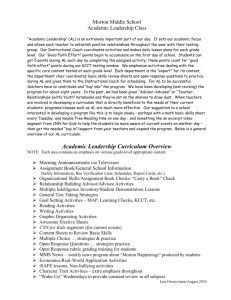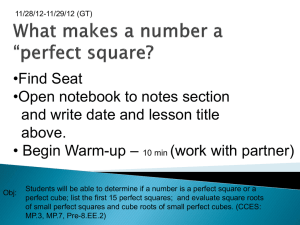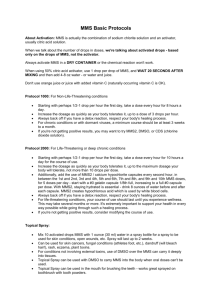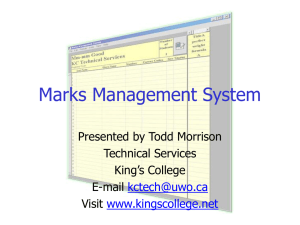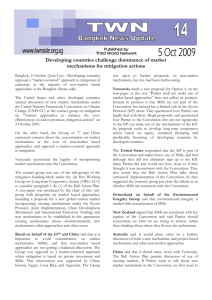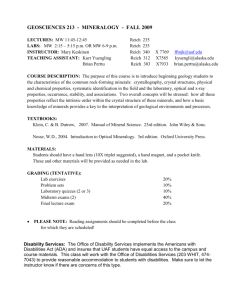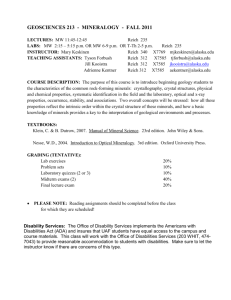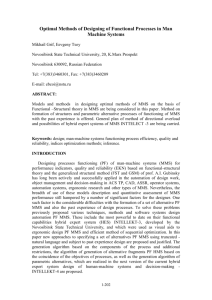N8.1 Post teacher aug12
advertisement
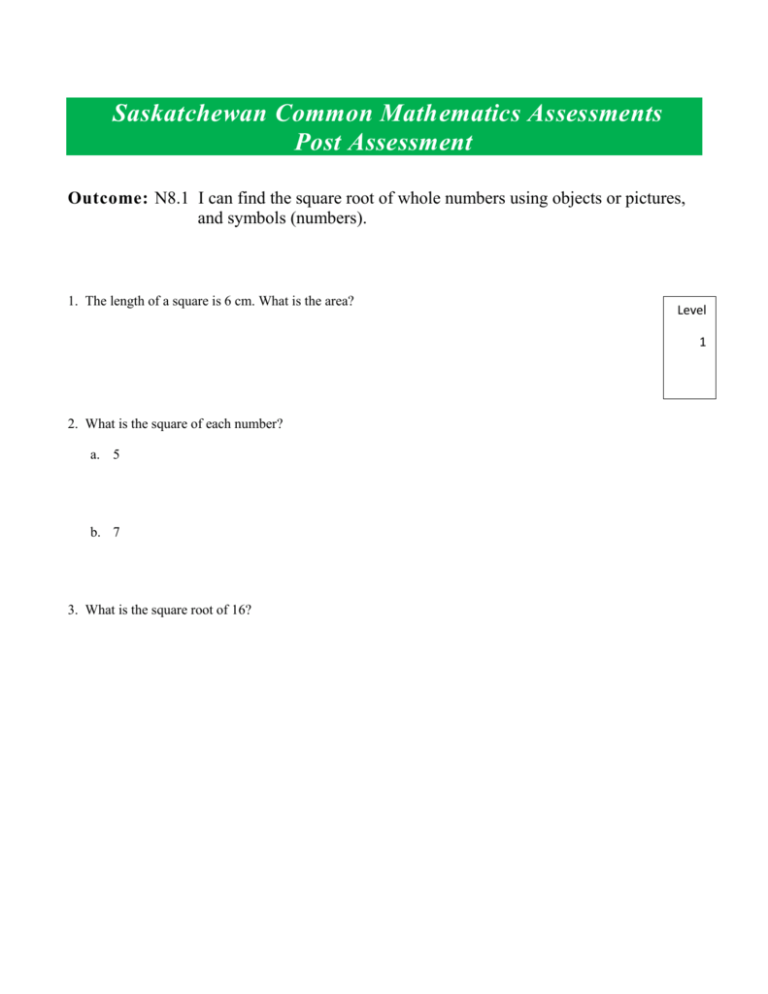
Saskatchewan Common Mathematics Assessments Post Assessment Outcome: N8.1 I can find the square root of whole numbers using objects or pictures, and symbols (numbers). 1. The length of a square is 6 cm. What is the area? Level 1 2. What is the square of each number? a. 5 b. 7 3. What is the square root of 16? 4. a) List the factors of each number in ascending order. i) 24 ii) 20 iii) 25 iv) 50 b) Which number in part a) is a square number? How can you tell? Level 2 5. Calculate 400 6. What is the greatest whole number less than 7. Estimate ? to 1 decimal place. 8. Which of these numbers is a perfect square: 34, 36, 38, or 40? 9. Which of these numbers are square numbers: 48, 64, 57, 81? 10. Which whole numbers between 67 and 141 are perfect squares? 11. What whole number is closest to? 12. Use a diagram to explain why 81 is a perfect square. Level 3 13. Simplify to the nearest whole number. 14. Write N. Estimate the value of N to 1 decimal place. 36 square units 31 square units 25 square units 6 N 5 15. Use guess and test to estimate to 2 decimal places. Record each trial. 16. Is 5.66 a good estimate of ? Justify your answer? Level 4 Teacher Section Question Indicator Level Source Teacher Notes: Students should be provided with manipulates to assist them in creating models while working with fractions. 1 Pre 1 MMS 36 cm2 2 Pre 1 MMS 3 Pre 1 MMS a) 52 = 25 b) 72 = 49 4 4 A 5 G 6 G 1 ANS: TB i) i) 24: 1, 2, 3, 4, 6, 8, 12, 24 ii) 20: 1, 2, 4, 5, 10, 20 iii) 25: 1, 5, 25 iv) 50: 1, 2, 5, 10, 25, 50 2 25 is a square number because it has an odd number of factors 2 MMS 400 = 20 2 TB 7 7 F 2 TB 6.9 8 C 2 TB 36 9 C 2 TB 64 & 81 10 H 2 TB 81, 100,121 11 12 C C 2 3 TB MMS 9 Answer A square with side length 9 units has area 81 square units. So, 81 is a perfect square. 13 G 3 TB 7 14 G 3 TB 5.6 15 16 F G 3 4 TB TB ANS 25 < 34 < 36 So, 5 < <6 With a calculator, use guess and test to refine the estimate. Sample answer: Try 5.11: (too small) Try 5.22: (too small) Try 5.83: (very close) Yes, 5.66 is a good estimate. (too small, but close) (too large, but close) (very close) Outcome: N8.1 I can find the square root of whole numbers using objects or pictures, and symbols (numbers). up to Level 1 up to Level 2 up to Level 3 up to Level 4 There is a partial No major errors or No major errors In addition to level understanding of omissions regarding the or omissions 3 performance, insome of the simpler details or regarding any of depth inferences Description of simpler details processes, but major the information and applications Levels: and processes. errors or omissions and/or processes go beyond what (based on Prior knowledge regarding the complex that were was explicitly Marzano, is understood. processes may be explicitly taught. taught. 2007) present. This is the target level for proficiency. Demonstrate an Recognize, show, and Apply estimation Determine the understanding of explain the relationship strategies to value or an division through between whole numbers determine approximate value the development and their factors using approximate of a principle and application concrete or pictorial values for square root with or of divisibility representations (e.g., principle square without the use of strategies for 2, using a set number of roots. N8.1 f technology. N8.1 g 3, 4, 5, 6, 8, 9, tiles, create rectangular Determine if Extend and 10, and regions and record the Indicators specific numbers understanding of dimensions of those and Learning through an are perfect square roots to analysis of regions, and describe Targets for squares through include the square how those dimensions each Level: division root of positive involving zero. relate to the factors of the the use of different types of rational numbers. N7.1 number). N8.1 a representations N9.3 Identify a number with a and reasoning, principle square root and explain the between two given reasoning. N8.1 c numbers and explain the reasoning. N8.1 h Studentfriendly descriptions of learning targets. I can use the divisibility rules for 2, 3, 4, 5, 6, 8, 9 and 10. I can recognize, show, and explain the factors of whole numbers using objects and/or pictures. I can identify a perfect square between two given numbers. I can estimate square roots. I can find perfect squares using different strategies and I can explain my thinking. I can find and estimate square roots using more than just a calculator.

